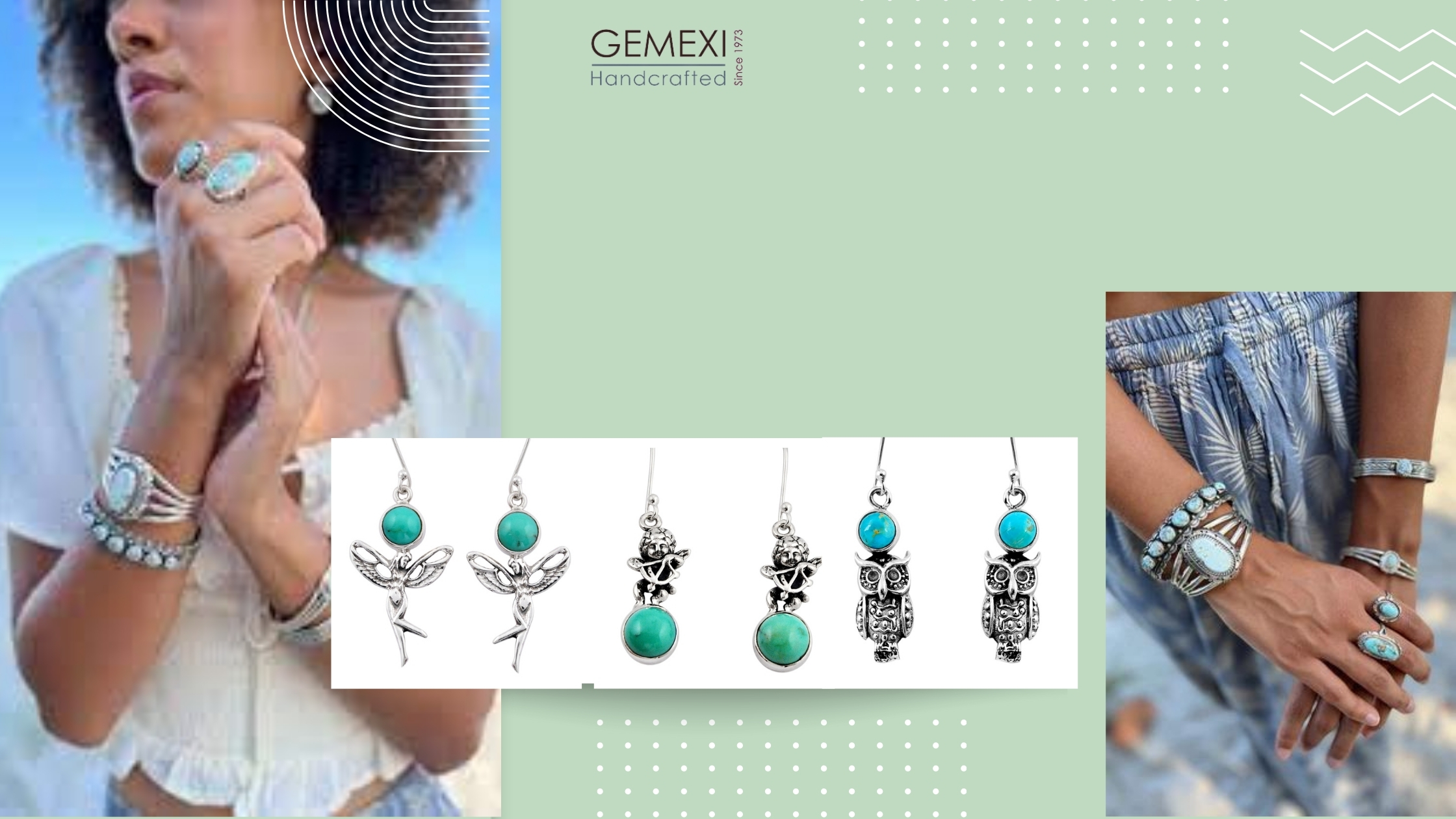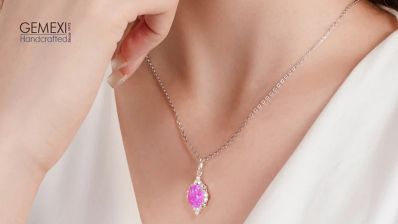Discovering the Beauty of Dry Creek Turquoise: Its Story, Significance, and Where to Find the Real Deal
By Gemexi Team | Jewelry- Updated On Jan 4, 2024

Dry Creek Turquoise is a gem that catches the eye with its soft blue color and clean look. But it's more than just a pretty stone; it has a fascinating history, cultural importance, and unique qualities that make it highly desired. Let's dive into the world of Dry Creek Turquoise, exploring where it comes from, why it's meaningful, what makes it unique, where to get genuine pieces, an idea about its prices, and tips for spotting the real thing.
History and Cultural Significance
Dry Creek Turquoise comes from the Dry Creek Mine on the Shoshone Indian Reservation in Nevada, USA. It's one of the last places in the country where turquoise is still mined. The Shoshone people, who are deeply connected to this gem, consider it spiritually important. They believe it enhances communication and connection, and its pale blue color, reminiscent of the sky, is linked to spiritual awareness and calmness. This makes Dry Creek Turquoise a valuable symbol in traditional ceremonies, representing protection and positive energy.
Properties of Dry Creek Turquoise
What makes Dry Creek Turquoise exceptional is its gentle pale blue shade, ranging from light blue to creamy white. Unlike many other turquoise types, it's prized for having little to no matrix, giving it a smooth and elegant appearance. This gem is also known for being tough and durable, making it perfect for various kinds of jewelry.
Its clean surface makes Dry Creek Turquoise an excellent choice for modern and simple jewelry designs. Its soothing color appeals to those who appreciate a subtle and refined gemstone.
Its clean surface makes Dry Creek Turquoise an excellent choice for modern and simple jewelry designs. Its soothing color appeals to those who appreciate a subtle and refined gemstone.
Where to Buy Dry Creek Turquoise
If you're considering getting your hands on Dry Creek Turquoise, go to trustworthy sources to ensure you get the real deal. Many Native American artisans use Dry Creek Turquoise jewelry, creating pieces with cultural significance.
Reputable dealers specializing in turquoise and Native American jewelry are reliable places to find authentic Dry Creek Turquoise. Additionally, consider checking out Native American co-ops and established online platforms known for their commitment to genuine gemstones.
Reputable dealers specializing in turquoise and Native American jewelry are reliable places to find authentic Dry Creek Turquoise. Additionally, consider checking out Native American co-ops and established online platforms known for their commitment to genuine gemstones.
Price Range of Dry Creek Turquoise
Dry Creek Turquoise comes at various prices, depending on color, size, and overall quality. Generally, stones with a clear, consistent blue color and minimal matrix are more valuable. Handcrafted jewelry by skilled artisans may also be pricier.
While Dry Creek Turquoise is rare, it can be more affordable than other turquoise types. Remember that quality and craftsmanship influence the cost, so consider these factors when deciding on a piece.
While Dry Creek Turquoise is rare, it can be more affordable than other turquoise types. Remember that quality and craftsmanship influence the cost, so consider these factors when deciding on a piece.
Identifying Authentic Dry Creek Turquoise
Spotting real Dry Creek Turquoise is crucial to make a genuine purchase. Look for stones with little to no matrix and a distinct pale blue color. Be cautious of stones claiming to be Dry Creek Turquoise with many matrices or vibrant blue hues, as these might need to be labeled or fake.
Reputable sellers will share information about the stone's origin and might offer certification to confirm its authenticity. If you're buying from individual artisans, ask them about their knowledge of the gemstone and where they source it to ensure you get the real thing.
Reputable sellers will share information about the stone's origin and might offer certification to confirm its authenticity. If you're buying from individual artisans, ask them about their knowledge of the gemstone and where they source it to ensure you get the real thing.
In Conclusion: A Beautiful Gem with Deep Roots
Dry Creek Turquoise isn't just a pretty gem; it's a cultural symbol rooted in Native American traditions. Whether you're fascinated by its history, cultural significance, or calming beauty, Dry Creek Turquoise is a testament to the lasting charm of turquoise in the world of gemstones. As you explore this unique gem, remember to prioritize authenticity, quality craftsmanship, and an appreciation for the cultural legacy that comes with each original piece of Dry Creek Turquoise.










0 Comments
Write Comments